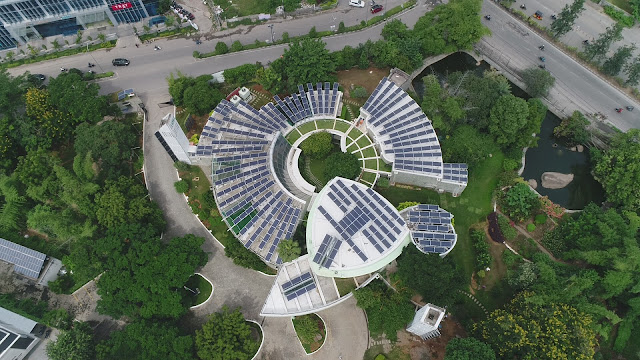BIFACIAL SEMI TRANSPARENT PV MODULES
Overview
Significant effort has been put out in the PV industry to develop efficient solar cells with high power densities. The most widely used materials for highly efficient crystalline solar cells include those known as the “interdigitated back contact” and the “hetero-junction with intrinsic thin-film.” However, these highly efficient solar cells can cost at least 40% more than conventional crystalline silicon solar cells. Therefore, interest is growing in alternative high-efficiency solar cells, especially selective emitter solar cells, metallization wrap through solar cells, and bifacial solar cells, all of which are based on Si and offer high efficiency at low to moderate cost levels. Among these, bifacial solar cells, which can be produced using existing PV module manufacturing equipment, are capable of efficiently generating power from both the front and rear face.
Bifacial semi-transparent solar panels are not entirely new. The first patent of bifacial solar cells was filed back in 1966 by Hiroshi, a Japanese researcher. Later, Russia deployed bifacial solar cells in its space program in the 1970s. In 1980, Cuevas et al. demonstrated a 50% increase in the output power of bifacial solar cells when compared to the identical mono facial ones. However first commercialization of Bifacial technology was done by Panasonic somewhere around 2011.
Working
The standard solar panels have their rear surface made of plastic which caused the sunlight incident on the backside to go to waste. The bifacial solar panels, on the other hand, have glass coating on both the front as well as rear surfaces. The design of these bifacial solar panels involves a glass-to-glass structure which makes it possible to capture the incidental reflective sunlight from the rear end along with the direct sunlight from the front surface. This allows them to produce more energy than regular modules. It’s been observed that these solar panels produce up to 20% more energy than the conventional mono facial solar cells of the same area.
The composite glass encapsulation of bifacial solar panels ensures higher durability, minimal degradation, and maximum service life. The structure is designed to protect the panel from environmental and mechanical damages. Thus, these panels often come with an extended warranty of 30 years, with their annual degradation rate being just 0.5%.
For buildings in general place is a big constraint to go for renewable energy harvesting. And in the case of bifacial semi-transparent solar modules, this problem has been addressed to a larger extent as the energy density for these panels are relatively higher thus utilising lesser space for generating a given amount of electrical energy.
CII GBC building in Hyderabad has installed a 120 kW solar project by using this technology. This helped in achieving NET ZERO Energy status for this building.
CII GBC building in Hyderabad has installed a 120 kW solar project by using this technology. This helped in achieving NET ZERO Energy status for this building.







No comments:
Post a Comment